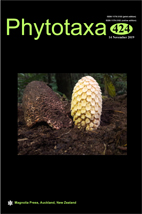Abstract
A new species of Cyrtopodium from Belize, C. vestitum, is described and illustrated. Its flowers are indistinguishable from those of Cyrtopodium macrobulbon, but the pseudobulbs are relatively shorter and thicker, ovoid ellipsoid, bearing proportionately more, densely packed internodes, and the leaves do not present an articulation, i.e., an abscission layer, between the sheath and the blade and are thus marcescent. A comparative anatomy study of this tissue is presented, contrasting its presence in C. macrobulbon and the lack thereof in the new species. This species should be considered Endangered (EN) because of its restricted geographical distribution in central Belize. An updated key to the species of Cyrtopodium from North America, the Caribbean, and Central America is also included.

